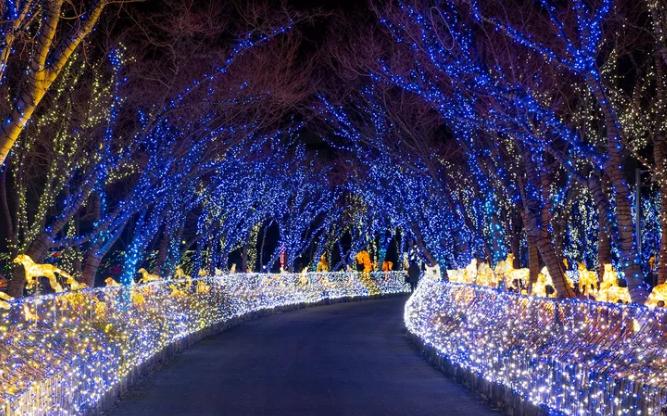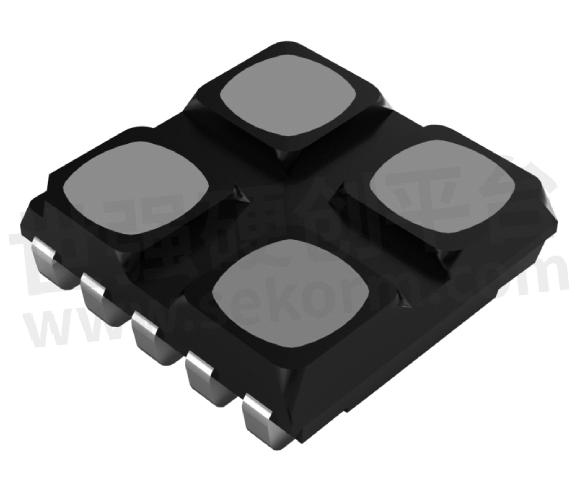Are LEDs The Most Energy Efficient Light Source

LEDs (Light-Emitting Diodes) have gained immense popularity in recent years due to their remarkable energy efficiency and numerous advantages. Their energy efficiency is unmatched by traditional lighting technologies, as LEDs convert a higher percentage of electrical energy into visible light, minimizing energy wastage in the form of heat. This efficiency translates into substantial energy savings and reduced electricity costs for homes, businesses, and public spaces. So, are LEDs the most energy-efficient light source? Let’s find out.

LEDs are widely used for lighting and decoration.
Does LED waste less energy?
LEDs (Light-Emitting Diodes) waste less energy compared to traditional lighting technologies, making them more energy-efficient. Here are a few reasons why LEDs waste less energy:
Heat Generation: LEDs produce significantly less heat compared to traditional lighting sources such as incandescent bulbs and fluorescent lamps. In traditional lighting technologies, a significant portion of the energy is converted into heat rather than visible light, resulting in energy wastage. LEDs, on the other hand, generate minimal heat, allowing a higher percentage of energy to be converted into light.
Directional Light Output: LEDs emit light in a specific direction, which reduces light dispersion and wastage. Traditional light sources emit light in all directions, requiring reflectors or lenses to redirect the light where it is needed. This inherent directional characteristic of LEDs ensures that the light is focused and reduces energy waste by minimizing unnecessary light scattering.
Efficient Conversion: LEDs efficiently convert electrical energy into light through electroluminescence. This means that a higher percentage of the energy an LED consumes is directly converted into visible light, resulting in less energy wastage.
Instantaneous Lighting: LEDs reach full brightness instantly when powered on, without any warm-up time. Traditional lighting technologies may take some time to reach full brightness, resulting in energy wastage during the warm-up period. LEDs eliminate this wastage by providing immediate illumination.
Dimmability: LEDs can be easily dimmed, allowing for flexible control of light output. By adjusting the brightness levels, LEDs can match the lighting requirements more precisely, avoiding unnecessary energy consumption. This dimming capability further enhances energy efficiency and reduces energy waste.
It’s important to note that while LEDs waste less energy compared to traditional lighting sources, the overall energy efficiency can still vary depending on factors such as the quality of the LED product, driver efficiency, and design considerations. Choosing high-quality LED products and implementing proper lighting design can maximize energy efficiency and minimize energy wastage.
How much electricity does an LED use?
The electricity consumption of an LED (Light-Emitting Diode) depends on its wattage rating and the duration for which it remains illuminated. LEDs are known for their energy efficiency, as they require significantly less electricity compared to traditional lighting technologies.
LEDs are typically labeled with their wattage, which indicates the amount of power they consume. However, it’s important to note that the wattage of an LED does not directly correlate to the brightness or light output. Instead, it indicates the power consumed by the LED device.
To calculate the electricity usage of an LED, you can multiply its wattage by the number of hours it remains illuminated. The result will give you the energy consumption in watt-hours (Wh) or kilowatt-hours (kWh).
For example:
If you have an LED with a power rating of 5 watts (5W) and it remains illuminated for 6 hours, the energy consumption would be:
Energy Consumption = Power (in watts) x Time (in hours)
Energy Consumption = 5W x 6 hours = 30 watt-hours (Wh) or 0.03 kilowatt-hours (kWh)
To determine the cost of electricity consumed, you would need to multiply the energy consumption by the electricity rate charged by your utility company. The electricity rate is typically measured in kilowatt-hours (kWh) and provided on your electricity bill.
Keep in mind that different LED models and designs may have varying efficiencies, so the actual electricity usage may vary slightly. Additionally, dimming an LED or using smart controls can further reduce its electricity consumption, as the power can be adjusted based on lighting needs.
Overall, LEDs are known for their low electricity consumption, which contributes to energy savings and reduced operating costs compared to traditional lighting options.
The technology of energy-efficient LED
Energy-efficient LEDs (Light-Emitting Diodes) are made possible through advancements in semiconductor technology and design considerations. Here are some key aspects of LED technology that contribute to their energy efficiency:
Semiconductor Materials: LEDs are constructed using semiconductor materials, typically composed of layers of different materials such as gallium nitride (GaN) or indium gallium nitride (InGaN). These materials have specific energy band gaps that allow for efficient electron movement and light emission when current passes through them.
Direct Electroluminescence: LEDs operate on the principle of electroluminescence, where electrons recombine with electron holes within the semiconductor material, resulting in the emission of photons (light). This direct conversion of electrical energy into light is more efficient compared to traditional lighting technologies that rely on processes like heating a filament or gas discharge.
Energy Conversion: LEDs have a higher energy conversion efficiency compared to other lighting technologies. They can convert a larger portion of the electrical energy they consume into visible light, minimizing energy wastage in the form of heat.
Low Voltage Operation: LEDs operate at relatively low voltages, typically ranging from 1.5 to 3.5 volts, depending on the specific LED. This low voltage requirement allows for efficient operation and reduces the need for high-power circuits, resulting in energy savings.
Efficiency in Color Production: LEDs can emit light in specific colors or a broad spectrum of colors. By utilizing different semiconductor materials or phosphor coatings, LEDs can achieve high color purity and efficiency. This means they can produce specific colors without the need for color filters, which can waste energy.

Kinglight provides various LEDs with the best performance in color production
Optics and Light Direction: LED designs often incorporate optics and reflector systems to control the direction of light output. By focusing the light in the desired direction, LEDs can minimize light dispersion and ensure that the emitted light is effectively directed where it is needed, reducing energy waste.
Efficiency in Heat Dissipation: Efficient thermal management is crucial for maintaining the performance and longevity of LEDs. Various techniques, such as heat sinks and thermal pads, are employed to dissipate heat effectively, preventing excessive temperature rise and maintaining optimal performance.
These technological advancements and design considerations contribute to the energy efficiency of LEDs, making them a preferred choice for various lighting applications. They offer significant energy savings, longer lifespan, and reduced environmental impact compared to traditional lighting alternatives.
In conclusion, LEDs (Light-Emitting Diodes) are generally considered to be the most efficient light source available today. LED technology has rapidly advanced over the years and has become a popular choice for various lighting applications due to its high energy efficiency.
- +1 Like
- Add to Favorites
Recommend
- Main Differences between Unipolar Power Diodes and Bipolar Power Diodes
- Building Excellent Intelligent Meter Solutions with Diodes, Transistors, LDOs and EEPROMs
- Electric Vehicle Malfunctions Due to Lack of Fuses or Diodes
- Heketai‘s SS14 and 1n4148 Diodes, S8205A or Hktq65n03 and Hktd120n04 Mos Products Can Be Used in Electric Drills
- Shenzhen Luguang Electronics Announced a Distribution with Sekorm, Bringing Domestic Diodes, Triodes, Rectifier Bridges and Other Products
- Applied Power Microelectronics and Sekorm Announced a Distribution Agreement that Brings ESD, Surge Protection Devices, Diodes and More
- LED Lighting and How It Can Save You Money While Reducing Your Carbon Footprint
- How to Make a 3D LED Display and What is the Advantages of a 3D LED Display
This document is provided by Sekorm Platform for VIP exclusive service. The copyright is owned by Sekorm. Without authorization, any medias, websites or individual are not allowed to reprint. When authorizing the reprint, the link of www.sekorm.com must be indicated.





























































































































































































































































































































































































































































































































































































































































































































































































































































































